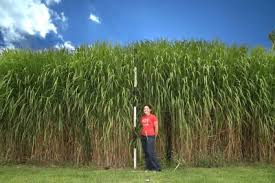Cascading biomass is the latest policy term for a multiple use of biomass, a use that starts ‘at the top’, in some material form (e.g. furniture or bioplastics) and ends up in the least valuable form: energy. Cascading biomass receives much policy support, at least in words. However, actual policies drive biomass to the least valuable option. In waste policy, governments have embraced a ‘waste hierarchy’ long ago, in which waste reuse, recycling etc., the environmentally most preferred options, would have to precede incineration. So what impedes the implementation of a similar scheme in the field of biomass?

A generally accepted scheme of multiple use of biomass would have both environmental and economic benefits. From an environmental point of view, biomass that is first used in some material form and only incinerated many years after, will store CO2 longer than biomass that is directly burned after the harvest. And in terms of the volume of CO2 captured, both options are at least equivalent. Generally, material use of biomass even leads to higher CO2 savings, because substitution of fossil fuels takes place in the material use (even double or triple in the case of recycling), and then again as the material is finally used for energy production. From an economic point of view, use as a material usually carries a better price and its manufacturing adds more value. For the development of the bioeconomy, multiple use of biomass is essential: bioenergy by itself will never add enough value to produce an economic take-off.
Invalid arguments in the discussion
German nova-Institute, one of the main proponents of the biobased economy, sums up the arguments pro and contra cascading biomass in its April newsletter. Our summary: none of the arguments against multiple use of biomass are valid.
• ‘A binding cascading principle cannot be implemented’ – but as nova notes, nobody ever proposed a legally binding cascading principle.
• ‘The market fears new regulations and bureaucracy’ – but the present biomass market is heavily regulated insofar energy use of biomass is concerned; indeed, it exists to a large extent only because of that regulation.
• ‘The market fears limited access to biomass’ – but the idea is merely that more biomass should go to other uses than energy, and as these volumes are much lower, this will not severely limit biomass availability for the energy market.
• ‘How to meet climate targets if less biomass is used for energy?’ – but studies by nova-Institute show that material use of biomass reduces at least as much CO2 emissions as energy use.
• ‘How to guarantee energy security if the cascading principle comes into force?’ – but resource security is as important as energy security, and by producing materials from (indigenous) biomass, we would precisely serve that goal.

Towards a policy for multiple use of biomass
A survey conducted by nova-Institute shows that industrial players on the biomass markets (chemicals and plastic, pulp and paper, waste management) rate ‘subsidies from competing biomass uses’ as the main obstacle for cascading biomass, noting that there is no comparable policy incentive for cascading. But that the world looks quite different from the viewpoint of other interests, shows when the bioenergy sector itself ranks ‘missing cooperation between actors in the value chain’ as the main obstacle.
In summing up, nova-Institute notes that subsidies and other regulations in favour of energetic use act against multiple use of biomass in two ways. Firstly, there is direct competition: the bioenergy sector can afford to pay higher prices for the commodity because of the subsidy. Secondly, because demand for biomass rises, prices rise, farmland prices rise, and in the end this mechanism strongly counteracts cascading biomass. In this respect, European energy policy stands in the way of the development of a bioeconomy. Commission and parliament should change the rules if they should indeed wish to develop a strong biobased industrial sector in Europe.
